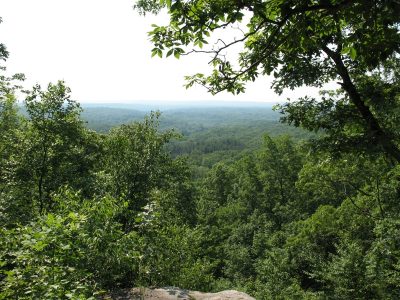The natural vegetative cover for Southern New England is trees and forest. People are often surprised to learn that most of Connecticut, about 75%, is under some sort of tree canopy. More than half of the land area of Connecticut, about 58%, is considered forest land in the traditional, rural sense. And most of this forest is privately owned, by families, farmers, camps, land trusts, game clubs, and other conservation organizations and entities.
There are nearly 140,000 family and individual woodland owners with parcels ranging in size from 1 acre to more than a thousand.
We all benefit from the good stewardship of the woodland resource provided by private owners, since we depend on these forest lands for things such as clean water and air, habitat for birds and animals and the aesthetic backdrop of our daily lives.
Resources for Woodland Owners
There are nearly as many different reasons for being a woodland owner as there are woodland owners themselves. Privacy, family legacy, investment, natural beauty, taking care of nature, recreation and a source of firewood are just a few of the benefits that woodland owners mention when asked about the ways they enjoy their land.
But stewarding the part of the Connecticut woods for which one is responsible is not always an easy task. Insects, invasive plants, tree diseases and other forest health concerns are a high priority for many woodland owners. The quality of wildlife habitat, the value of trees, the impact of recreational vehicles might also be issues for which a woodland owner might seek a management solution.
A variety of resources both public and private are available to assist woodland owners with management guidance. If you are a woodland owner with a question or an issue requiring professional assistance the links that follow will help you find a solution.
